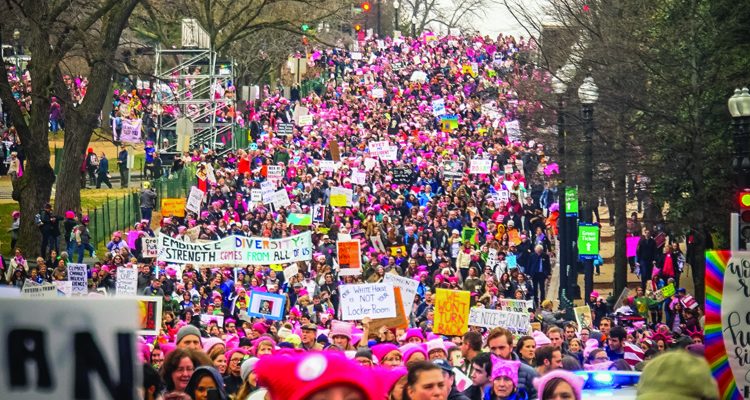In a nation marred with division over the inauguration of the 45th president of the United States, Donald J. Trump, civil rights activism was the answer for 3.2 million (and counting) men and women this past Saturday, Jan. 21. Across the nation, these individuals partook in the Women’s March in Washington, which occurred in various major suburbs around the country. Not only did these marches make a statement against the actions of Trump, but they also left the nation inspired to continue along this path of activism.
Though news seems to have been nationally-focused, numerous other women’s protests emerged across the globe including New Zealand, France and Ghana, showing that the issue of women’s rights is not only one that is national, but also global. This global initiative is further enforced with the dissatisfaction many Eurocentric and socialist countries feel toward Trump’s presidency and the threat it has toward U.S. international policy.
Perhaps the most important message that can be gained from these marches is not only the message of women’s rights, but the idea that activism in the form of protests is still an effective way to broadcast political and social messages and make sure they are reverberated throughout the world.
According to the New York Times, crowd scientists estimated that approximately 160,000 individuals were present at the National Mall in Washington D.C. for Trump’s inauguration, while an estimated 470,000 individuals were at the same location for the Women’s March on Washington. Comparatively, Politico, a political news source that reports about campaigns, Congress, lobbyists and issues, reported that Obama’s 2009 inauguration received an attendance of more than 1.8 million.
Talking Points Memo, a news source which provides commentary on political events, took this a step further and looked into the number of metro rides on the days of Trump’s inauguration, Obama’s 2009 inauguration and the Women’s March. Obama’s inauguration garnered the most rides with 1,100,00, while the Women’s March followed closely behind with 1,001,616 rides, and Trump’s inauguration lagged behind with 570,557 rides.
All this shows that more individuals made an effort to support the rights of women at the National Mall than to support Trump’s presidency, making this one of the biggest political statements against a president in U.S. history. In this way, protesters nationwide were able to communicate their powerful message to Trump and his administration by sheer force of numbers, overwhelming the White House and the nation as a whole.
Stemming from this comes the ideology of bringing the power back to the people and allowing individuals to find strength in numbers. In this strength, a unity is formed that builds upon the rigid spirit of the American people and the ability to find determination in opposition. The Women’s March on Washington might have passed but the message still lingers; all rebellions are built on hope.


Leave a Reply